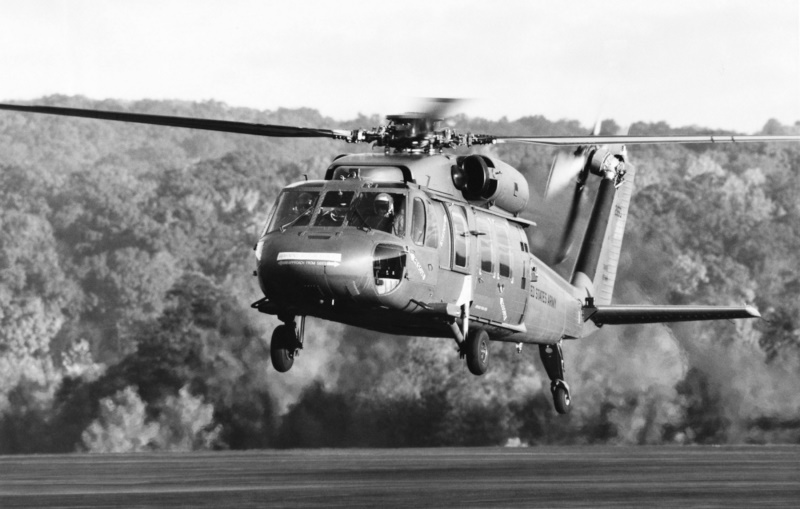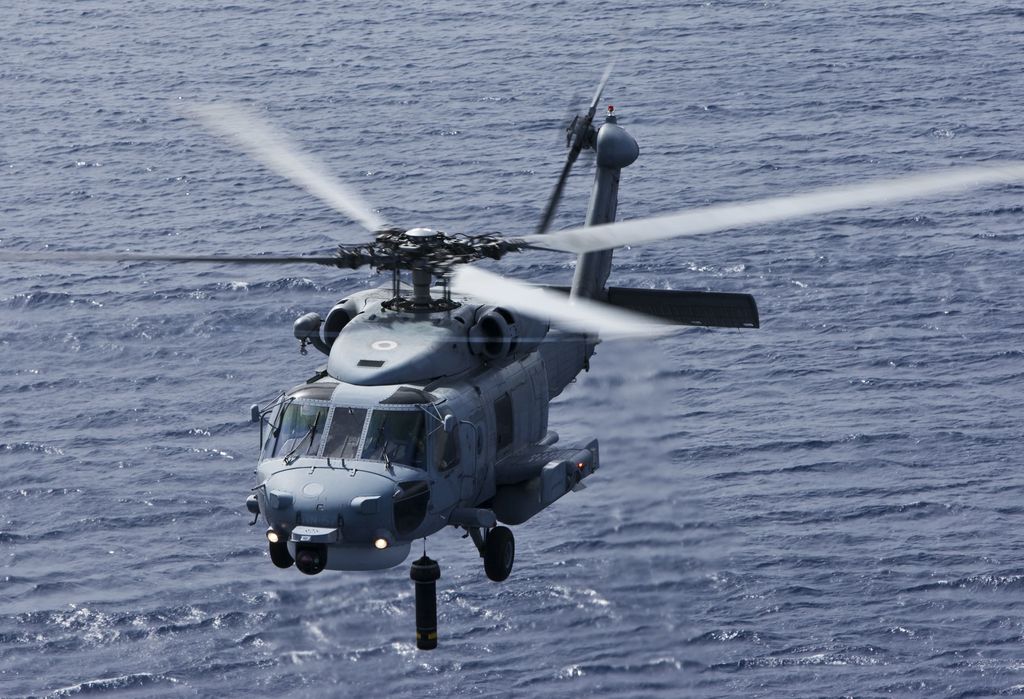Revealing the Sikorsky S 70: Developments and Breakthroughs in Helicopter Engineering
High-Performance Multi-Role Rotorcraft Featuring Advanced Cockpit Technologies and Integrated Sensor Equipments
The realm of rotorcraft innovation has actually seen remarkable innovations in current times, particularly in the realm of high-performance multi-role rotorcraft geared up with sophisticated cockpit innovations and effortlessly integrated sensing unit systems. These advancements have not only boosted the operational capabilities of rotorcraft however have actually also dramatically impacted contemporary aviation procedures on numerous fronts. From enhanced goal convenience to improved functional effectiveness, the merging of sophisticated cabin innovations and incorporated sensor systems has actually ushered in a new era of opportunities for rotorcraft applications. In the complying with conversation, we will certainly check out the advancement of rotorcraft technology, delve right into the realm of sophisticated cockpit advancements, and examine the implications of integrated sensor systems on the operational adaptability and performance of contemporary rotorcraft.
Advancement of Rotorcraft Innovation
The evolution of rotorcraft technology has actually been marked by substantial developments in the rules of aerodynamics, materials, and propulsion systems, shaping the capabilities and performance of contemporary rotorcraft. Wind resistant renovations have actually improved the effectiveness and ability to move of rotorcraft, permitting raised rate, dexterity, and security during flight (sikorsky s 70). Technologies in materials, such as using composite products and advanced alloys, have actually resulted in lighter yet stronger rotorcraft structures, boosting total efficiency and longevity. In addition, developments in propulsion systems, consisting of more powerful engines and innovative propulsion innovations, have allowed rotorcraft to attain greater altitudes, faster rates, and better payloads.
These improvements have not only changed the abilities of rotorcraft yet have actually likewise expanded their applications throughout numerous markets, including armed forces, business, and emergency situation services. The continual development of rotorcraft modern technology proceeds to drive advancement in the area, pushing the borders of what is possible and shaping the future of vertical trip.
Advanced Cockpit Innovations
Structure upon the fundamental innovations in the rules of aerodynamics, products, and propulsion systems, the realm of rotorcraft technology now moves emphasis towards introducing Advanced Cabin Innovations. The integration of innovative innovations within the cabin atmosphere plays a crucial role in enhancing the functional capacities, safety, and efficiency of modern-day rotorcraft. sikorsky s 70. Advanced Cabin Innovations include a large variety of features made to offer pilots with boosted situational awareness, streamlined information monitoring, and instinctive control interfaces
One of the essential improvements in cockpit style is the application of glass cockpits, which change typical analog assesses with high-resolution screens. These digital systems supply personalized layouts, real-time information combination, and improved readability, making it possible for pilots to accessibility vital information at a glance. Advanced avionics systems, such as fly-by-wire controls and enhanced fact screens, are revolutionizing how pilots engage with the aircraft, allowing for exact control and enhanced decision-making capabilities.


Incorporating sophisticated cabin technologies not just improves pilot efficiency but likewise contributes to overall objective efficiency and security in complicated functional atmospheres. By leveraging modern technologies within the cockpit, rotorcraft producers are setting brand-new standards for operational quality and mission success.
Integrated Sensing Unit Solutions
With the advancement of rotorcraft technology, the integration of sophisticated Integrated Sensor Systems has actually come to be critical in boosting operational efficiency and safety. These Integrated Sensor Solutions include a large array of modern technologies that give critical data for numerous features such as navigation, monitoring, targeting, and environmental surveillance. By seamlessly integrating sensors like radars, cameras, lidar, and infrared systems into rotorcraft, operators can benefit from boosted situational awareness, boosted objective capacities, and decreased pilot workload.
One secret advantage of Integrated Sensing unit Systems is their capacity to gather real-time information and offer actionable understandings to pilots and objective drivers. Advanced radar systems can check over here spot and track targets over long ranges, enabling for very early hazard discovery and efficient response planning. Furthermore, integrating electro-optical and infrared cams enables rotorcraft to perform reconnaissance and surveillance goals with accuracy and precision.
In essence, the integration of advanced sensing unit technologies into rotorcraft not only enhances operational efficiency but likewise adds dramatically to overall goal success and team safety. As rotorcraft remain to progress, the function of Integrated Sensing unit Systems will undoubtedly continue to be at the center of development in the aerospace industry.
Functional Convenience and Performance
Enhancing click here to find out more functional convenience and effectiveness in rotorcraft is an all-natural progression from the combination of advanced Integrated Sensing unit Equipments. By leveraging the insights and information provided by these cutting-edge sensor systems, rotorcraft can maximize their performance across numerous goals and settings.
Operational convenience encompasses the ability of rotorcraft to adjust to different roles and situations effectively. With innovative cabin innovations and incorporated sensor systems, rotorcraft can effortlessly shift between tasks such as search and rescue, clinical emptying, security, and more. This adaptability improves the rotorcraft's capacity to satisfy diverse operational demands without requiring extensive reconfiguration.
Effectiveness in rotorcraft procedures is crucial for making best use of mission performance and resource application. Integrated sensing unit systems play a pivotal role in enhancing functional efficiency by offering real-time information on climate problems, terrain mapping, target tracking, and a lot more. This data allows pilots to make enlightened decisions promptly, optimize trip courses, save gas, and improve total goal performance.
Effect On Modern Aeronautics Operations

Additionally, the combination dig this of sophisticated sensors promotes improved mission planning and execution, allowing rotorcraft to do a large range of jobs with enhanced accuracy. From search and rescue procedures to airborne firefighting and police goals, the capabilities of modern rotorcraft geared up with advanced cockpit innovations and integrated sensor systems are unequaled.
Additionally, the effect of these improvements extends beyond functional effectiveness to cost-effectiveness and sustainability. By enhancing flight courses, gas usage, and upkeep routines, high-performance rotorcraft geared up with sophisticated cabin modern technologies and sensing units add to decreasing operational prices and ecological effect, making them vital possessions in modern aviation procedures.
Verdict
In conclusion, the high-performance multi-role rotorcraft with sophisticated cabin innovations and incorporated sensing unit systems stands for a substantial development in air travel modern technology. These developments improve functional convenience and performance, ultimately impacting modern aeronautics operations in a positive way. The combination of these advanced modern technologies permits boosted capabilities and performance in numerous goal circumstances, showcasing the continued advancement of rotorcraft modern technology in the aeronautics industry.
The world of rotorcraft modern technology has actually seen notable improvements in current times, particularly in the world of high-performance multi-role rotorcraft outfitted with cutting-edge cockpit innovations and perfectly incorporated sensor systems. From enhanced goal versatility to boosted operational efficiency, the convergence of innovative cabin innovations and incorporated sensor systems has ushered in a brand-new age of possibilities for rotorcraft applications. In the following discussion, we will certainly check out the advancement of rotorcraft innovation, dive into the world of advanced cabin advancements, and take a look at the ramifications of integrated sensing unit systems on the functional flexibility and effectiveness of modern-day rotorcraft.
